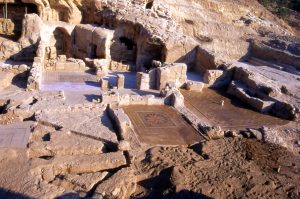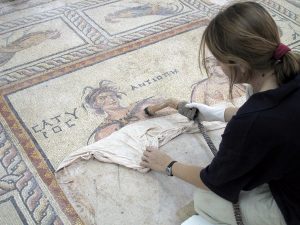Introduction
Before the Packard Humanities Institute (PHI) entered onto the Zeugma scene with the ZAP2000 program, some random excavations by French and Turkish archaeologists between 1996 and 2002 led to the detachment of 48 mosaic pavements, most of which were figured and polychrome — some 850 m2 altogether. These undocumented interventions were performed by unqualified personnel, with disastrous results. Right after the ZAP2000 program began, in 2001 the CCA, Centro di Conservazione Archeologica, was put in charge of Zeugma’s conservation by the PHI and the Turkish Ministry of Culture. Thus began a major program to restore the mosaics.
The mosaics are dated between the second and third centuries AD and primarily came from wealthy private homes. They form a collection of high artistic worth and an extraordinary document of the city’s history and ancient techniques of mosaic production. An integral part of the project was the construction of two laboratories for restoration of mosaics and wall paintings, as well as reserves for the mosaics, which are still available to the Gazientep museum.
Initiatives for the dissemination of the conservation program, conferences, guided tours were organized throughout the intervention period in order to disseminate the results and inform the media, the local population and the international public. During the intervention, a training course for local technicians was carried out and an international seminar on preventive conservation was organized.










